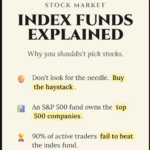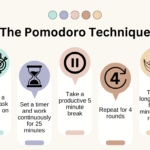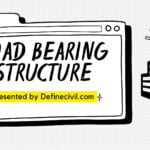If you keep your money in a savings account, you are losing money.
That sounds harsh, but it is the mathematical truth. If your bank pays you 0.5% interest, but inflation (the rising cost of goods) is 3%, your purchasing power is shrinking every single year. You are safely going broke.
To build real wealth—the kind that allows you to retire early, send your kids to college debt-free, or travel the world—you cannot just save. You must invest.
But for most people, the word “investing” is terrifying. It conjures up images of shouting men on Wall Street, complicated charts with red and green lines, and the fear of losing everything in a crash.
Here is the secret the finance industry doesn’t want you to know: Investing is actually boring.
Successful investing isn’t about picking the next Tesla or timing the market perfectly. It’s about buying the whole haystack and waiting. In this comprehensive guide, we are going to strip away the jargon and teach you exactly how to go from “clueless” to “investor” in simple, actionable steps.

Part 1: The Two Forces: Inflation vs. Compound Interest
Before we talk about stocks, we need to talk about why we are doing this. It comes down to a battle between two powerful economic forces.
The Enemy: Inflation
Inflation is the silent tax. It is the reason a movie ticket cost $5 in 1995 and costs $18 today. If you bury $10,000 in your backyard today, in 20 years, it will still be $10,000. But it will only buy $5,000 worth of groceries.
- The Goal of Investing: To earn a return that is higher than inflation so your money grows in real value.
The Hero: Compound Interest
Albert Einstein reportedly called compound interest the “eighth wonder of the world.” Compound interest is when your money makes money, and then that money makes more money.
The Example of Jack vs. Jill:
- Jill starts investing at age 25. She invests $200 a month for 10 years and then stops completely. She never adds another penny.
- Jack waits until age 35. He invests $200 a month for 30 years (until age 65).
- Who has more money at age 65? Jill wins. Even though she invested far less money ($24,000 total vs. Jack’s $72,000), her money had 10 extra years to compound.
Lesson: Time is your greatest asset. Not your IQ, not your income, but your time. Start now.
Part 2: Prerequisites (Don’t Invest Yet If…)
Investing involves risk. Before you enter the market, you need a stable financial foundation. Do not put a penny into the stock market until you have checked these three boxes:
- High-Interest Debt is Gone: If you have credit card debt at 20% interest, paying that off is a guaranteed 20% return on your money. The stock market averages 8-10%. The math says pay the debt first.
- Emergency Fund is Full: You need 3-6 months of expenses in a high-yield savings account. If the market crashes and you lose your job simultaneously, you do not want to be forced to sell your investments at a loss to pay rent.
- Short-Term Goals are Safe: If you need money in less than 5 years (for a house down payment or wedding), keep it in a High-Yield Savings Account or CDs. The market is too volatile for short timelines.
Part 3: The Vocabulary (What Are You Buying?)
You don’t need a finance degree, but you do need to know what is on the menu.
1. Stocks (Equities)
When you buy a stock, you are buying a tiny piece of ownership in a real company. If you buy one share of Apple, you are a part-owner of Apple. If they sell more iPhones and profits go up, the stock price goes up. Some companies also pay Dividends, which is profit sharing paid directly to you in cash.
- Risk: High. Individual companies can go bankrupt.
- Reward: High.
2. Bonds (Fixed Income)
A bond is a loan. You are the bank. You lend money to a government or a corporation for a set period. In return, they pay you interest.
- Risk: Low. The US Government is unlikely to go bankrupt.
- Reward: Low. Safer, but lower growth than stocks.
3. Mutual Funds / ETFs (The Basket)
This is the holy grail for beginners. Instead of trying to pick the “winning” stock (which is like finding a needle in a haystack), you buy the whole haystack. An Index Fund (or Exchange Traded Fund – ETF) bundles hundreds or thousands of stocks into one single share.
- Example: The S&P 500. This is a list of the 500 largest companies in America (Apple, Microsoft, Amazon, Google, etc.). When you buy an S&P 500 Index Fund, you own a tiny sliver of all 500 companies at once.
- Why it’s better: If one company goes bankrupt, it doesn’t matter because you own 499 others that are doing fine. This is called Diversification.
Part 4: The Strategy (Passive vs. Active)
There are two ways to invest.
Method A: Active Investing (Stock Picking) This is what you see in movies. People reading charts, watching CNBC, and trying to guess which stock will go up tomorrow.
- The Reality: Studies show that over a 15-year period, 90% of professional fund managers fail to beat the S&P 500 index. These are people with Ivy League degrees and supercomputers. If they can’t do it, you probably can’t either.
Method B: Passive Investing (The “Lazy” Portfolio) This involves buying low-cost Index Funds and holding them forever. You accept the “market average” return (historically ~10% per year).
- The Reality: By accepting the average, you actually beat 90% of the pros (after fees).
Your Strategy: Be a boring, passive investor. Buy Index Funds. Ignore the news.
Part 5: Accounts (Where to Put the Money)
You need a “container” to hold your investments. The government gives us special tax-advantaged containers to encourage us to save for retirement. Fill these buckets in this order:
Bucket 1: The 401(k) Match (Free Money)
If your employer offers a 401(k) match (e.g., “We match 50% of your contribution up to 6%”), take it.
- If you put in $1, they put in $0.50. That is an instant, guaranteed 50% return. You will never find an investment better than this.
Bucket 2: The Roth IRA (Tax-Free Growth)
An IRA is an Individual Retirement Account. You open this yourself (not through your job).
- Roth: You pay taxes on the money now (when you earn it), but you pay zero taxes when you pull it out in retirement.
- If your investments grow from $50,000 to $1,000,000 over 30 years, the government can’t touch a cent of that growth. It is the best deal in the tax code.
Bucket 3: Traditional IRA / 401(k)
These give you a tax break today (lowering your taxable income), but you pay taxes when you withdraw the money in retirement. Good for high earners trying to lower their current tax bill.
Bucket 4: Taxable Brokerage Account
This is a standard account with no special tax benefits. Use this only after you have maxed out your retirement accounts (Buckets 1, 2, and 3).
Part 6: How to Actually Buy (Step-by-Step)
Okay, you have the theory. How do you press the button?
Step 1: Open an Account
Go to a reputable, low-cost brokerage. The “Big Three” are highly recommended because they have low fees and great customer service:
- Fidelity
- Vanguard
- Charles Schwab
- Avoid: Banks (high fees) and “Gamified” trading apps (like Robinhood) that encourage you to day-trade rather than invest long-term.
Step 2: Transfer Money
Link your checking account and transfer funds. It usually takes 1-2 days.
Step 3: Choose Your Fund
You want a Total Market Index Fund or an S&P 500 Index Fund. Look for the “Ticker Symbol.”
- Vanguard: VTSAX (Total Market) or VOO (S&P 500 ETF).
- Fidelity: FZROX (Total Market – 0% fees) or FXAIX (S&P 500).
- Schwab: SWTSX (Total Market).
Step 4: Buy
Enter the ticker symbol. Select “Buy.” Enter the dollar amount you want to invest. Click “Submit.” Congratulations. You are now an investor.
Part 7: The “Fee” Trap (Expense Ratios)
In investing, you get what you don’t pay for. Every fund charges a fee to manage the money. This is called the Expense Ratio.
- Active Funds: Often charge 1% to 2%.
- If you invest $10,000 with a 2% fee, you pay $200 a year. Over 30 years, that 2% fee can eat up 40% of your total gains.
- Index Funds: Often charge 0.03% or 0.04%.
- If you invest $10,000 with a 0.04% fee, you pay $4 a year.
Rule: Never buy a fund with an expense ratio higher than 0.10% unless you have a very specific reason.
Part 8: Navigating the Storm (Market Crashes)
Here is the guarantee: The market will crash. It happens every 7-10 years. We had the Dot Com crash (2000), the Housing Crisis (2008), and the COVID crash (2020).
When the market crashes, your account balance might drop by 30% or 40%.
- Novice Reaction: Panic. Sell everything to “stop the bleeding.” (This locks in your losses).
- Pro Reaction: Do nothing. Or better yet, buy more.
The Supermarket Analogy: If you walked into a supermarket and saw that steaks were 40% off, would you scream and run away? No, you would stock up! When the stock market crashes, stocks are “on sale.” It is the best time to buy.
History Lesson: Every single stock market crash in the history of the US stock market has been followed by a recovery and then new all-time highs. Every. Single. One. Betting on the market to recover is betting on human innovation and the economy.
Part 9: Frequently Asked Questions
Q: How much money do I need to start? A: With many modern brokers (like Fidelity), you can start with $1. You can buy “fractional shares.” Don’t wait until you have $1,000. Start with $50 today.
Q: Is crypto investing? A: Crypto (Bitcoin, Ethereum) is speculation, not investing. Investing is buying an asset that produces cash flow (companies produce profits). Crypto does not produce cash flow; it relies on the “Greater Fool Theory” (someone buying it from you for more).
- Advice: Limit crypto/speculation to 5% of your portfolio. It is gambling money, not retirement money.
Q: What about Roboadvisors (Betterment, Wealthfront)? A: These are great. They pick the funds for you and rebalance your portfolio automatically. They usually charge a 0.25% fee. This is higher than doing it yourself (DIY), but much lower than a human advisor. If you are lazy (in a good way) and don’t want to pick funds, use a Roboadvisor.
Q: When should I sell? A: Ideally, not until you retire. Investing is like a bar of soap. The more you handle it, the smaller it gets (taxes and fees). Leave it alone.
Conclusion
Building wealth is not about being a genius. It is about consistency and patience.
It is about living below your means, taking the difference, and buying a slice of the global economy. It is about waking up in 20 years and realizing that the $500 you automatically transferred every month has turned into a life-changing sum of money.
The best day to plant a tree was 20 years ago. The second best day is today. Open that account. Buy that index fund. And then, go live your life while your money works for you.

















